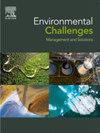气候变化和变率:西非旱地Bontioli自然保护区植被动态的驱动因素
Q2 Environmental Science
引用次数: 0
摘要
气候变化通过影响温度、降雨和季节模式,显著影响植被动态和植物生产力。在西非热带稀树草原等旱地生态系统中,这些变化加速了生物多样性的丧失,并降低了碳固存能力。本研究考察了西非稀树草原Bontioli自然保护区(BNR)植被对气候变率的响应。利用谷歌Earth Engine平台获取的Landsat影像的归一化植被指数(NDVI),结合高分辨率地球地表气气学(CHELSA)的高分辨率生物气候数据,采用广义加性建模(GAM)分析了过去30年(1993 - 2023)的植被变化。结果表明,植被动态变化速率为0.051±0.043/年,植被下降主要与气温升高和降水减少有关。模型(R²= 0.836,p <;0.001,偏差解释= 0.935,RMSE= 0.073)强调气温上升和长期干旱是植被胁迫的主要驱动因素,而间歇性降雨事件仅触发暂时的恢复阶段。植被生产力的峰值记录在降雨量在250-300毫米之间,温度在26 - 28°C之间。带植被覆盖度(FVC)的NDVI空间分析显示,整个北北缘地区的植被密度持续下降,强调了气候变化的严重后果。这些发现揭示了保护区通过维持生态完整性和促进植被恢复能力在缓解气候影响方面发挥的关键作用。气候智慧型政策的保障措施可以在提高植被对气候变化影响的恢复能力方面发挥关键作用。自然资源保护主义者和政策制定者应该把重点放在综合适应、长期适应气候的植物物种上。应对这些挑战可直接支持整个西非大草原地区实现可持续发展目标13和15。本文章由计算机程序翻译,如有差异,请以英文原文为准。

Climate change and variability as drivers of vegetation dynamics in Bontioli Natural Reserve, West African drylands
Climate change significantly impacts vegetation dynamics and plant productivity by affecting temperature, rainfall and seasonal patterns. In dryland ecosystems such as the West African savanna, these changes accelerate biodiversity loss, and reduces carbon sequestration capacity. This study examines vegetation response to climate variability in the Bontioli Natural Reserve (BNR), within the West African savanna. Using the Normalized Difference Vegetation Index (NDVI) retrieved from Landsat imagery via the Google Earth Engine platform, coupled with high-resolution bioclimatic data from the climatologies at high resolution for the earth’s land surface areas (CHELSA) we analysed the vegetation changes over the past three decades (1993 to 2023) employing Generalize Additive Modelling (GAM). Results indicate significant shifts in vegetation dynamics at a rate of 0.051 ± 0.043/year, with vegetation decline primarily associated with increased temperatures and reduced rainfall. The model (R² = 0.836, p < 0.001, deviance explained= 0.935, RMSE= 0.073) underscores that rising temperature and prolonged droughts are key drivers of vegetation stress, while intermittent rainfall events trigger only temporary recovery phases. Vegetation productivity peaks were recorded at rainfall levels around 250–300 mm, and temperatures between 26 and 28 °C. Spatial analysis of NDVI with fractional vegetation cover (FVC) highlights an ongoing decline in dense vegetation across the BNR, emphazing the severe consequences of climate change. These findings revealed the critical role protected areas play in mitigating climate impacts by maintaining ecological integrity and promoting vegetation resilience. A safeguarding measure with climate smart policies can play a crucial role in improving the vegetation resilience to climate change effects. Conservationists and policymakers should focus on integrative adaptive long-term climate-resilient plant species. Addressing these challenges directly supports the achievement of SDG 13 and 15 across the broader West African Savanna region.
求助全文
通过发布文献求助,成功后即可免费获取论文全文。
去求助
来源期刊

Environmental Challenges
Environmental Science-Environmental Engineering
CiteScore
8.00
自引率
0.00%
发文量
249
审稿时长
8 weeks
 求助内容:
求助内容: 应助结果提醒方式:
应助结果提醒方式:


